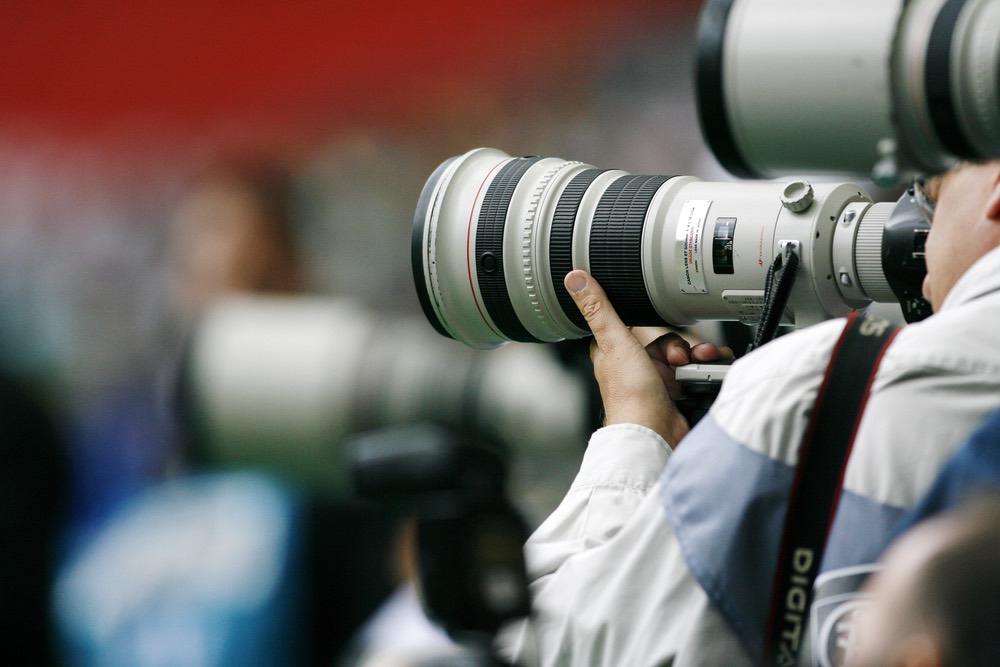Photographing sports is a challenging but prestigious discipline. It can be a great way to test your skills. To get crisp, clear photos in fast-paced situations, sports photographers must be able to think quickly and control their camera settings.
This level of expertise is something you can only achieve after a while. It takes a lot to become a great sports photographer!
Let’s look at some of the most important settings for sports photography that both professionals and amateurs should know, as well as some helpful tips and tricks.
How to shoot high-speed reliably
The challenge of capturing moving subjects is at the heart of all sports photography. This is largely down to intuition – knowing when to press the shutter. But much of it can be boiled down to the skillful use and technique of your camera.
Let’s discuss some of the key ways you can optimize your shooting in high-speed situations.
Choose a faster shutter speed.
Your sports photography can be improved in countless ways by using a fast shutter speed. It freezes the action and brings fast-moving subjects into sharper focus.
It is not uncommon to set your camera in shutter-priority mode and then force very fast exposures without even thinking about the composition or subject.
Use a faster shutter speed to compensate for a blurry shot that you may have taken while taking sports photography. Comparing slower shutter speeds to 1/200s or higher can be a great way to capture human subjects walking. If you are shooting motorsport or aircraft, for example, then a 1/1000s shutter speed is required to freeze the action.
Consider Using Continuous Shooting Focus Mode
The standard autofocus mode on most cameras is AF-S or single-shot autofocus. This mode is great for composing landscapes and portraits or anything else that only moves a little.
Shooting sports in the single-shot mode is a little tricky. Your camera will only allow you to trigger the shutter once it has locked focus. It is possible to miss the perfect moment because the autofocus took too much time to lock on to the subject. You can avoid this problem by activating continuous shooting mode (AF-C).
Autofocus continuous mode will allow your camera to hunt for focusing targets by half-pressing the shutter, similar to AF-S. Unlike AF-S, AF C mode continues to scan and attempt to focus the image until the picture is taken. You can trigger the shutter whenever you want without waiting for a lock.
This makes AF C autofocus more effective at tracking moving objects when they are moving fast.
Use stabilization, especially with a Telephoto Lens.
Even if you shoot at a fast shutter speed the majority of the time, it is still advisable to stabilize your camera while photographing sporting events. This is due to focal distance.
Sports photographers often use long lenses to get closer. You can capture close-ups from a distance with a powerful telephoto lens.
The only downside is that a longer focal length will result in more camera shaking. This is why the stabilization of your camera is so crucial!
This includes a tripod that is sturdy to rest your equipment on. Nothing prevents camera shaking and blurry pictures better.
You will only be able to use a tripod sometimes. You may have to move around a lot when shooting indoor sports. There are other stabilization techniques that you can use.
Monopods are more convenient to use and transport compared to their three-legged cousins. You can also get powerful lens-based vibration-reduction tech and in-body image stabilization. These can reduce motion blur and shake by at least several stops when used intelligently.
Slowly Increase ISO Settings
It’s not the panacea for photography, but it is a good idea to keep your ISO high when shooting sports, especially indoors or in the evening. You can maintain the high shutter speeds without affecting your depth of field.
